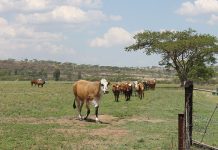
Unfortunately, farmworkers remain extremely vulnerable to HIV infection.
According to a study published in 2012 by the International Organisation for Migration (IOM), it is estimated that HIV/AIDS prevalence among farmworkers and their families was easily twice that of the general population.
The main contributing factors were limited access to health services due to the considerable distance between farms and clinics, low education levels, lack of funds for transportation and treatment, inflexible working hours, and lack of benefits such as paid sick leave.
At the turn of the century, the UN’s Food and Agriculture Organisation (FAO) predicted that by 2020 South Africa could lose up to 20% of its agricultural workforce due to HIV/ AIDS-related deaths.
In a subsequent report on the impact of HIV/ AIDS on farms in Southern Africa, the FAO said that the disease was causing a decline of labour quality and supply, more frequent and longer periods of absenteeism, and losses in skills and experience. The latter resulted in a younger, less experienced workforce which, in turn, resulted in production losses.
These ramifications, according to the FAO, exacerbated existing skills shortages and increased the cost of training and benefits.
The South African National AIDS Council has released some of the latest statistics on HIV/AIDS in the country in preparation for the 21st International Aids Conference in Durban from 18 to 22 July. Some of the numbers, especially with regard to the increase in treatment, are encouraging, but most are frightening.
There are about 6,8 million people in South Africa living with HIV (about 13% of the population) and government was spending about R23 billion per year on treatment and prevention.
The health department’s Dr Yogan Pillay said at a press briefing that recent statistics indicated that nearly 2 000 young women, between the ages of 15 and 24 (the demographic group with the highest infection rate), were infected with HIV every week in South Africa.
A 2009 study by the IOM to determine the vulnerability of migrant farmworkers to HIV infection and AIDS in the commercial farming sector in South Africa, found that almost 30% of all farmworkers who took part in the survey (seasonal and permanent) were infected.
This was more than double the national rate of infection.
In his column this week, Peter Hughes provides a solid argument why farmers should make provision for HIV/AIDS education and treatment for the people living and working on their farms.
He also gives some advice for putting a workplace HIV/AIDS policy in place on farms. Given the high prevalence of HIV among farmworkers, its devastating impact on families and communities, and the economic implications the virus holds for the farming sector, Hughes’s call to action is advice that no farmer can afford to ignore.
Denene Erasmus
Editor












